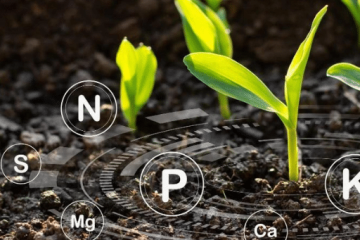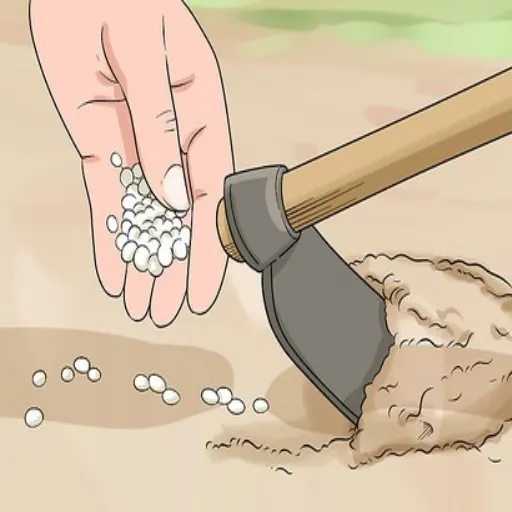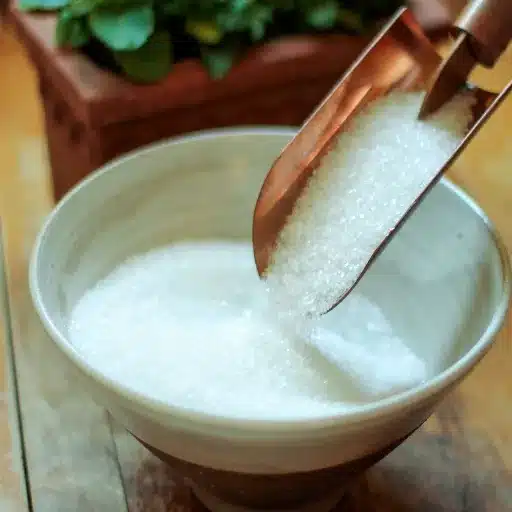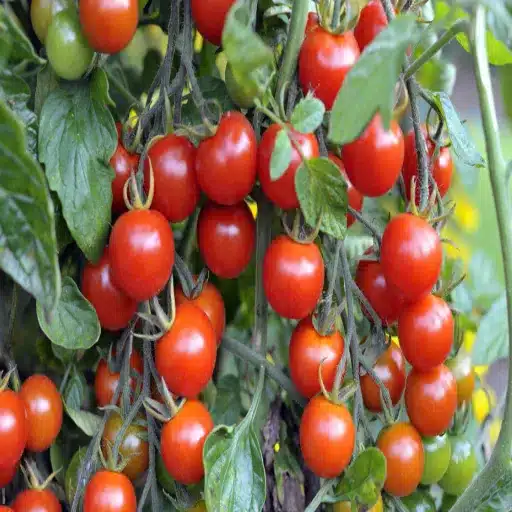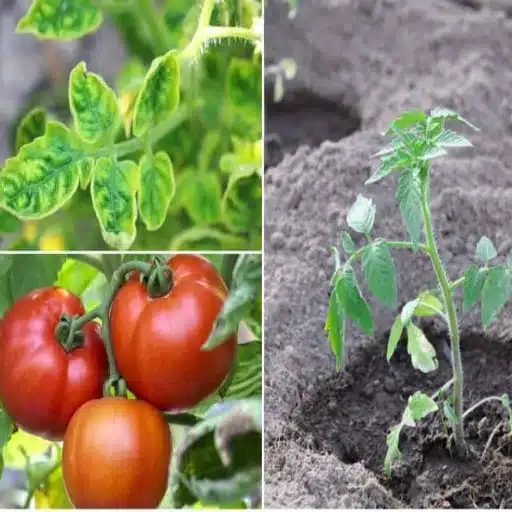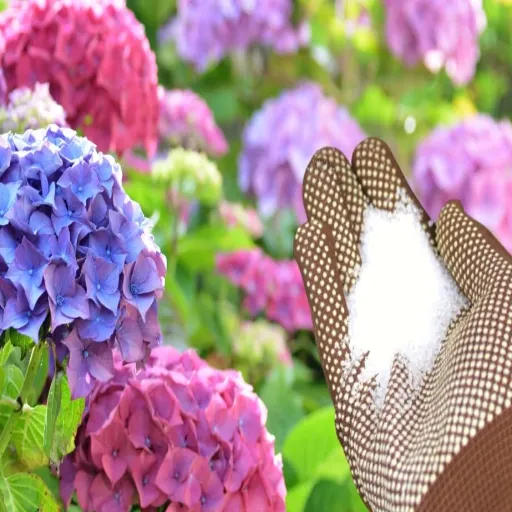Proper nutrient care, especially the right balance of nitrogen, is behind the vigorous green colour of lush lawns. When it comes to effective and economical nitrogen supplements, urea is the clear choice. However, it must be dealt with carefully to avoid nutrient imbalance, environmental damage, and harm to the lawn. This guide aims to clarify urea application and provide effective methods to use this fertiliser efficiently and responsibly. This article will help you improve your lawn care regardless of whether you are a professional landscaper or a homeowner with a small lawn, and it will help you obtain remarkable results.
Benefits of Using Urea for Lawn Care
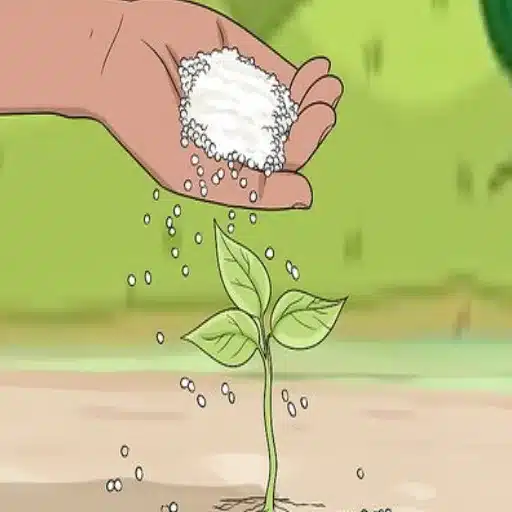
Effectiveness as a Nitrogen Source
Lawn care benefits greatly from the nutrients offered by Urea, particularly because of its nitrogen content, which is generally around 46%. This nitrogen content makes urea one of the most concentrated nitrogen fertilizers, enabling users to supply a substantial amount of this vital nutrient with minimal applications. This is especially beneficial for the upkeep of vibrant lawns, which need constant nitrogen for growth and color.
Through natural soil reactions, the nutrients available in urea begin to be processed as soon as it is applied onto the lawn. In the presence of moisture, urea undergoes conversion to ammonium carbonate, and then to nitrate, which the grass roots can easily take up. This rapid and reliable nitrogen supply enhances nutrient availability, promoting strong root growth, healthy leafy growth, and efficient photosynthesis. Further, urea works in tandem with other lawn fertilizers and soil conditioners, enhancing its usability for diverse soil types and conditions.
Nonetheless, the issues previously mentioned are far easier to avoid with the right care. Inappropriate application, like excessive application and poor timing, is the most frequent form of misuse. As a result, in hot or damp conditions, volatilization and leaching of nitrogen will soar. To make certain that nutrient delivery is as efficient as possible, your lawn can benefit greatly from the adherence to soil testing guidelines and optimal application of urea, such as during cool morning hours or paired with light irrigation. This ensures the lawn is well taken care of, nutrient waste is minimized, and the impact on the environment is lowered.
Cost Efficiency of Urea Fertilizer
Urea fertilizer is by far the cheapest form of nitrogen for farms and homes to use. Other fertilizers all have lower nitrogen content than urea, which has roughly 46%, and as a result, urea requires less mass and is cheaper to achieve the required nutrition goal. With crops, turf, and other plants, their use disproportionately benefits the budget of users.
Moreover, urea’s unique combination of adaptability and ubiquity places it at the top of the market in terms of economic accessibility. Its manufacturing is supported by inexpensive raw materials, mainly ammonia and carbon dioxide, enabling low production and retail costs. In comparison with fertilizers like ammonium nitrate or ammonium sulfate, urea is more cost-effective on a nitrogen-per-pound basis, which facilitates its universal usage in agriculture.
On the other hand, to maintain its effectiveness, urea must be used correctly. Its benefits can be diminished if overuse or improper timing results in nutrients being lost through volatilization, runoff, or leaching. To reap the most economic and nutrient-saving benefits, such regulations must be followed. Proper use of urea, which includes nutrient testing and efficient application, keeps this option low-priced and a trustworthy form of fertilizer.
Rapid Absorption by Plants
Due to its nitrogen load and water solubility, farmers tend to use urea because of its quick absorption by plants. Once urea has been spread on the fields, it dissolves swiftly in the soil moisture, which allows it to convert into ammonium carbonate via urease. The resulting ammonium can then be absorbed by the plant roots, serving as an immediate source of nitrogen, which is crucial in a plant’s vegetative growth and metabolic activities.
Soil temperature, moisture levels, and pH are some of the factors that influence urea absorption. Having the proper soil pH and sufficient irrigation can make nitrification more effective, therefore making nitrogen easy to absorb for the plants. In contrast, unfavorable conditions can slow absorption and increase the chance of nitrogen loss; hence, application methods must be accurate.
When applying urea, it is most effective to either plow it in right after application or apply it during irrigation. This folio helps in protecting the nitrogen from volatilization and ensures the nitrogen is more available for the plants. Sustainable agricultural practices are improved when fertilizer use is more efficient, and many studies back these best practices, thereby affirming their benefits.
Step-by-Step Usage Instructions
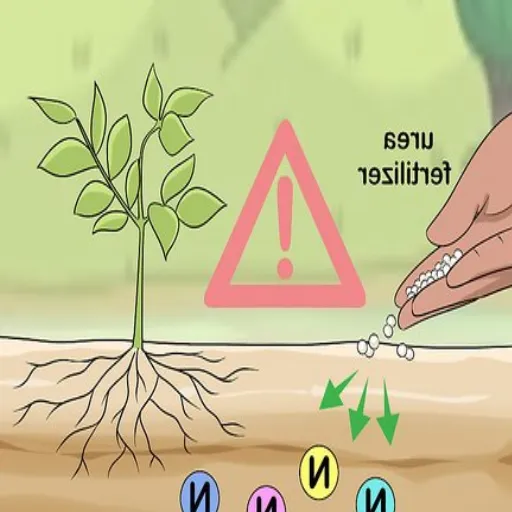
Measuring Urea Fertilizer
The precise calibration of urea-based fertilizers is important to conserve plant health and to reduce the negative impact on the environment. Begin by determining the desired application rate tailored to the specific crop, the status of nutrients in the soil, and the prevailing agronomic factors. In most cases, the general guidelines would provide rates based on metric or imperial units per unit area, which take into consideration such factors as the nutrient status of the area.
For urea measurement, use a calibrated scale with the appropriate scale for weighing the granular form of the fertilizer. For bigger areas, use spreaders and other equipment so that the fertilizer is spread evenly at the desired rate. To avoid over- or under-applications, which can lead to wasted resources or nutrient imbalance, it is important to check the equipment for calibration and perform maintenance whenever necessary.
The urea application preparation process is affected by the granule size and density, which impact both the flow rate and the application accuracy. On the ground, urea may be mixed with other fertilizers or soil conditioners to improve its handling, but the mixtures must be checked for chemical compatibility to eliminate the risk of negative interactions.
As with the quantitative models, precision farming implements such as GPS-based gadgets or digital readers can boost the accuracy for measurement and real-time tracking. Such devices make it possible to take full advantage of the data in making decisions that improve the effective use of fertilizers, curb the loss of nitrogen, enhance the output of crops, and still meet the set targets of sustainability.
How to Apply Urea Fertilizer
Maximizing the benefits from a urea fertilizer application means being mindful of the right period to apply, the appropriate method, the correct quantity, and the nutrient uptake to minimize losses. To start with, urea is a nitrogen source that is highly soluble and prone to volatilization if left on the soil surface. It should be assimilated into the soil as soon as possible to maximize its benefits. This can be done either mechanically through tilling or by using irrigation water that dissolves urea and relocates it to the root zone.
Depending on the type of crop and field conditions, the use of precision application techniques can improve the efficiency of broadcast spreading, band placement, or fertigation. While broadcast spreading is appropriate for pre-plant and top-dress applications, placing the band directly in the root zone greatly reduces losses and guarantees proper nutrient delivery. Urea application to high-value crops through irrigation systems, called fertigation, has the added advantage of proper and even distribution.
The urea application has to be coordinated with its other activities. Urea application has to be coordinated with the urea application schedule and the crop’s growth stage, especially during the high nitrogen demand. Split urea application, which means shortening the application stages, nitrogen demand of lesser quantity is extended to the crops, is generally recommended to lessen the chances of over-application and to reduce urea runoff and leaching.
In addition, these days, the use of environmentally sustainable technologies is essential. Volatilization losses can be minimized by using controlled-release formulations or urea inhibitors. Its use, in combination with advanced products, site-specific management techniques, and soil testing, allows for the implementation of nutrient management, which is prudent to ensure productive agriculture practices.
Achieving Optimal Results
For the best nutrient management results and to sustain the agricultural practices, it becomes imperative to work on multiple fronts, which also include advanced technologies and data methodologies. Waste can be significantly reduced, and crop nutrition can be ensured with precision agriculture tools such as GPS-enabled equipment and real-time soil sensors. In addition to this, the use of satellite imagery combined with predictive analytics can be incredibly useful in monitoring crop nutrient health, and the rest of the strategy can be adjusted accordingly.
No-till and reduced tilling practices help in the preservation of organic matter and soil structure, which in turn helps the soil to retain nutrients for a longer period of time. Erosion is reduced and biodiversity is enhanced with the use of crop rotations and cover cropping. Along with this, crop rotations and cover cropping enhance the cycling of nutrients. Different types of data obtained from different digital platforms can be combined with the regional agronomic models and can be of great help in making nutrient management decisions for certain regions.
With aeronomy and agronomy research, the farmers can tap these studies and make agronomic decisions that are environmentally friendly, which are effective in enhancing soil productivity, and which also keep their farms at the leading edge of sustainable farming.
Best Practices for Urea Application
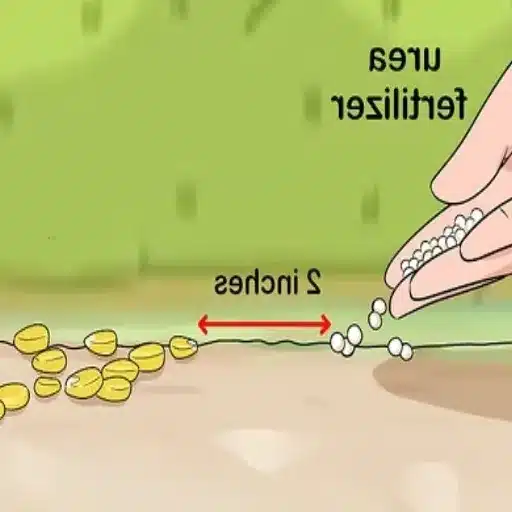
Timing and Frequency of Application
- Divide the Application for Better Results: Applying urea in several smaller doses instead of one big dose is beneficial to the crop as it ensures the steady availability of nitrogen over time. Research indicates that making several small applications can reduce the nitrogen losses by as much as 30% compared to making a single broadcast application.
- Apply During the Active Growth Period: Applying urea for the crops is best during their key growth stages, for example, during tillering or flowering. Nitrogen application during the tillering stage provides great benefits for the cereals, enhancing their vigor and yield potential.
- Do Not Apply Just Before Heavy Rain: The application of urea just preceding heavy downpour must be avoided, since this increases the chances of leaching and runoff of nitrogen. When the application timings are poor, data shows that in high rainfall intensity areas, the nitrogen losses are more than 40%.
- Check the Temperature and Moisture of the Soil: Urea application is most successful when soil temperatures are between 50°F and 77°F (10°C to 25°C) and when there is adequate soil moisture to promote microbial activity for urea hydrolysis. Effectiveness can be reduced by extremely dry or waterlogged conditions.
- Pre-Plant vs. Top-Dress Applications: Applying nutrients before planting supports the early growth stage of the crop, whereas top-dressing later in the season caters for the continuing nitrogen requirements. It has been noted through research that utilizing both strategies yields up to 20% improvement in nitrogen use efficiency.
All these methods are important for maximizing the benefits of urea, lessening its ecological footprint, and sustainably enhancing agricultural efficiency.
Weather Considerations for Effective Use
Using urea fertilizer at the right time is crucially affected by the weather. Temperature, rainfall, and how the wind blows are a few of the important weather factors. The proper management of temperature and rainfall can help reduce the volatilization and leaching of nitrogen. Urea application under hot weather not only increases the risk of ammonia volatilization but also nitrogen loss. Results from studies show that a soil temperature of more than 77°F (25°C) tends to increase losses, especially when urea is kept on the soil surface without mixing.
The pattern of precipitation is an equally vital factor to consider. Within 24 hours after the application, light rainfall of about 0.25 to 0.5 inches is regarded as the best for reducing volatilization and improving soil retention. Nutrient runoff and the risk of water pollution in nearby ecosystems tend to increase with heavy rains immediately after the application.
As far as urea application is concerned, strong winds require more attention since they tend to reduce nutrient availability by distributing urea unevenly. Thus, the application should be done during low winds, preferably below 10 mph, to permit accurate fertilizer placement.
When a grower aligns urea application with appropriate weather, as mentioned above, they can improve nitrogen efficiency, reduce environmental threats, and therefore, foster sustainable farming. The new developments in weather forecasting make it possible for farmers to take advantage of advanced information technologies, thus making fertilization more precise and more likely to succeed.
Techniques for Even Spreading
To support an optimal crop yield, plants require nutrient inputs that are precisely distributed. The application of fertilizers in appropriate amounts and at the right time has to be supported by the right machinery to ensure that the nutrient inputs are evenly distributed. For instance, the use of Variable Rate Technology (VRT) and fertilizer broadcast spreaders is commendable. The use of VRT and spreaders has to be properly calibrated with granules of the appropriate size for the desired application. The use of the appropriate machinery has to be demonstrated through constant testing.
Furthermore, the use of VRT in combination with GPS-based steering automation systems enables the spreaders to be adjusted and controlled on the basis of real-time field heterogeneity. Strip testing, which involves applying different amounts of fertilizer on predetermined strips of land, is a useful method of determining the right amounts to use on specific field areas. The use of overlapping patterns in spreading eliminates overlaps and gaps, which further enhances even distribution.
Consistent coverage is obtained more readily when there is a uniform granule size, according to new research. Non-uniform fertilizers and uneven granule sizes can cause ineffective coverage, which affects both the pattern in which crops grow and the obtainable yield. A centrifugal spreader, when combined with a precision metering system, has been shown to significantly improve coverage as well as nitrogen efficiency. These methods, which are enabled by technology, contribute to the efficiency and productivity of farming.
Common Mistakes to Avoid
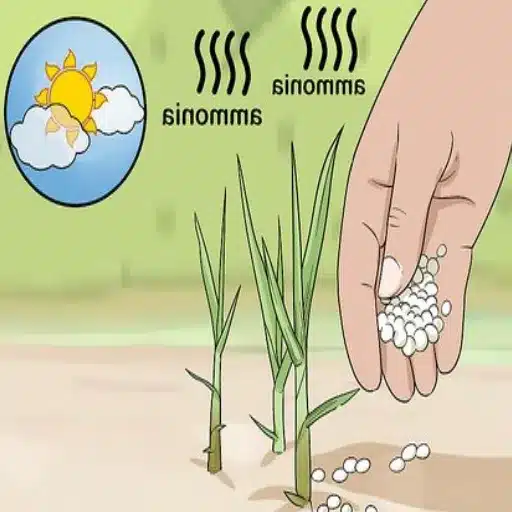
Over-Application of Urea
Inaccurate calibration of delivery machinery, lack of soil testing, or overestimation of crop nitrogen demand often lead to over-application of urea. This practice results in a number of environmental and agricultural issues. The presence of excessive urea in the soil leads to nitrogen leaching, which is the infiltration of nitrates into groundwater, thereby potentially contaminating the water supply and aquatic life. In addition, surplus nitrogen favors the volatilization of ammonia gas, which is inefficient and also worsens greenhouse gas emissions.
Excessive application of urea also impacts crops negatively. Too much nitrogen throws the plant’s nutrient ratio out of balance and encourages foliage growth at the expense of reproduction. The resulting weak root system, increased vulnerability to pests and diseases, and delay in maturation all come with a yield penalty.
New research highlights the necessity of focusing on site-specific nutrient management practices, such as variable rate application and sensor-based nutrient monitoring, in order to reduce the aforementioned risks. When combined with regular soil testing, these techniques improve the precision of urea application and nitrogen use efficiency (NUE), thereby enabling sustainable crop production.
Uneven Spreading Techniques
A mix of different fertilizers can severely impact a farmer’s output and the environment. There is a set of key issues that farmers face. Firstly, nutrient hotspots are areas of excess fertiliser application, which not only creates a nutrient imbalance but also increases the chances of leaching or volatilisation. Secondly, nutrient-deficient zones can slow the progression of plant growth, leading to lower yields. The problems associated with nutrient imbalances are usually flagged due to the application of fertilisers through old equipment, improper spreader calibration, or inconsistent application due to ground conditions.
The issues related to nutrient imbalances can be addressed through the use of GPS-enabled auto-steer and variable rate technology (VRT) spreaders. As per the literature, use of such equipment not only diminishes nutrient loss but also enhances nitrogen use efficiency (NUE) by 25%. In addition, the use of multi-spectral and optical sensors allows for the monitoring of the crop and field conditions, which can be used to verify if the fertilisers being applied meet the crop and field nutrient and temporal requirements.
Tests performed in several locations show that farms using these precision spreading methods achieve a better harvest and lower environmental damage than farms using traditional uniform application. Precision farming mitigates environmental hazards and sustainably increases production through the use of specialised and updated machinery.
Applying Urea in Poor Weather Conditions
The use of urea during dry spells is difficult because of its tendency to volatilize and leach. When soil moisture and temperatures are low, nutrients tend to wash away, especially with higher rainfall or prolonged wet spells. Nutrients tend to wash away, and during wet spells, they tend to leach. During dry spells, there is less moisture to wash urea into the soil, increasing volatilization, especially when there is no irrigation or rainfall to wash urea into the soil.
Inhibiting urea breakdown by slowing urea hydrolysis can, for example, N-(n-butyl) thiophosphoric triamide (NBPT) has been demonstrated to successfully reduce ammonia losses. Using split applications of fertilizers would improve nitrogen availability by applying them at the critical crop growth stages, eliminating the possibility of unpredictable losses during erratic weather. The use of soil moisture and weather prediction devices would also enable the use of fertilizers at the right time, which is an effective method of nutrient management.
As observed from the data collected, farms that have adopted weather-sensitive management practices and enhanced-efficiency fertilizers have reported an improvement in crop yields, together with a 15-30% decrease in nitrogen losses. In that regard, deploying these technical solutions is necessary for protecting agricultural yields under difficult weather conditions, while also protecting the environment from urea misuse.
Environmental Considerations
Reducing Runoff from Urea Application
With detailed planning and commitment, farmers and land managers can effectively mitigate the runoff of urea and minimize its adverse effects on the environment. Below are five key methods:
- Burning of Stabilized Fertilizers: Stabilized fertilizers include inhibitors that delay the transformation of urea into ammonium. This, in turn, decreases the potential for nitrogen leaching and volatilization. According to studies, urease inhibitors help to curtail nitrogen stone associated with runoff by 40%, thus boosting nutrient efficiency in crops.
- Fertilizer Split Applications: Applying fertilizers in smaller amounts timed with the growth stages of crops rather than a single large application helps in reducing runoff. As earlier indicated, nutrients would be available and utilized by the plants. This would help in reducing nitrogen losses of 20–35%, as supported by split application studies.
- Utilizing Cover Crops: Cover crops such as clover and rye can be used during the off-growing seasons to take up leftover nitrogen and protect it from being carried away by rain. Evidence supports that this practice reduces runoff by 31% while simultaneously increasing soil organic matter over the long term.
- Precision Agriculture Technologies: GPS-aided fertilization, soil testing, and weather forecasting are some precision agriculture technologies that enhance fertilizer application accuracy. Evidence supports the use of these technologies in reducing nitrogen runoff by 25–45%, as they guarantee capture and placement of nutrients to the plant root zones, reducing excess application.
- Buffer Strips and Vegetative Barriers: The use of vegetative buffer zones aids in reducing sedimentation and nutrient leaching into water bodies. Evidence shows that vegetative buffers mitigate over half of nitrogen runoff, making vegetative buffers decisive in the reduction of diffuse pollution from farming activities.
Each of these tactics contributes uniquely to the goals of environmental preservation, optimization of resources, and enhancement of crop yield. When implemented correctly, site-specific sustainable nutrient management practices can be achieved.
Minimizing Environmental Impact
To enhance agriculture with minimal damage to the environment, we need to devise and apply detailed, well-researched, and evidence-backed strategies that are suited to the given environmental context. Below is a list of five important methods, along with detailed metrics and the benefits that they bring:
- Fertilizer Application in Detail: Over-fertilization is one of the key issues confronting modern agriculture. It can be effectively addressed with the help of modern precision agriculture techniques. Supplementing these systems with GPS guidance systems can increase their efficiency. According to studies, placing fertilizers with greater care in deciding their timing and placement can reduce nitrogen losses by as much as 40%, which greatly decreases leaching and runoff.
- Crop Rotation Systems: Using a diverse crop rotation system improves the fertility of the soil and decreases the need for chemical fertilizers. The use of legumes in crop rotation is an example of such practices. The use of legumes is known to decrease the use of synthetic nitrogen. Studies show a 20-30% overall reduction of fertilizer use as a result of crop rotation.
- Cover Crops: The planting of cover crops, such as rye or clover, aids in the prevention of soil erosion and nutrient losses during the seasons when crops are not actively being grown. The use of cover crops is strongly associated with reduced nitrogen losses, which are said to be as high as 48% annually. Moreover, these crops are also helpful in increasing the soil organic matter.
- Integrated Pest Management (IPM): The use of IPM systems has helped reduce the use of pesticides. The use of IPM systems integrates biological, cultural, and chemical control techniques, which are complementary. In addition, the use of pesticides is not only reduced but also the frequency of their application is lowered by as much as 50%, which is beneficial to the ecosystem. Furthermore, this system mitigates the chances of polluting the water bodies.
- Riparian Buffers: The use of vegetative buffers along water channels is essential in controlling erosion. The vegetative cover helps in the capture of sediment, nutrients, and other pollutants, which would otherwise be carried into water systems. When used, riparian vegetation buffers help in the control of phosphorus runoff by as much as 75%, and the decrease in sediment load is 60%, which helps in the restoration of water quality and habitats.
The methods above, when implemented, cultivate a healthy working environment for the farmers at the same time as protecting nature and the invaluable resources for the future.
Best Practices for Sustainable Lawn Care
Eco-friendly lawn care is the use of modern technology to care for the lawn with the least possible negative impact on the environment. Eco-friendly practices begin with mowing and the use of a mower with precise controls. Keeping the grass length between 3 and 4 inches helps the grass develop stronger roots. In addition, it helps reduce water use and weed growth. Taller grass can help reduce the growth of harmful grasses by shading them. Grass clippings also act as a natural fertilizer by giving back nitrogen and other nutrients to the soil.
Overwatering is a widespread problem that can result in water wastage and the development of shallow roots. Using a deep and infrequent watering schedule can later work on fixing this issue. Such watering can help nourish the roots by improving drought resistance. Evaporation and fungal growth can be reduced by watering in the early morning, further enhancing the efficiency of the water used.
In terms of fertilization, the focus should be on the health of the soil and the nutrients. Fertilization should do more for the soil, as with the nutrients, as opposed to the wrong nutrients being overused on the soil. Nutrient deficiencies should be addressed more precisely as with organic or slow-release fertilizers. Excessive nitrogen application is a frequent issue, as with other nutrients, and can lead to pollution, claiming waterways due to nutrient runoff, so adherence to the recommended rates is of importance.
In the end, focusing on integrated pest management (IPM) reduces the use of chemical pesticides by relying on a healthy infrastructure and natural sickness methods, healthy soils, properly aerated soils, and the use of natural, alive foods for the common predators of known pests. With the adoption of sustainable practices, both individuals and property maintainers stand to benefit hugely as they have less dependence on maintaining the environment, strong lawns, and sustainable care for the environment.
Frequently Asked Questions (FAQ)
Q: How can I ensure my lawn gets the maximum benefits of urea fertilizer?
To get the most from urea fertilizer for your lawn, make sure to apply it at the most beneficial time, which tends to be the active growing period of the lawn when its nitrogen needs are the highest. Use granular urea for ease of spreading or the liquid form for swift water dissolution. As a good rule of thumb, a single application of about 1 pound of nitrogen per 1,000 square feet is effective, but try to tailor this figure to the actual requirements of your lawn.
Q: How does the nitrogen content in urea fertilizer influence grass growth?
As you may know, urea fertilizer has about 46 percent nitrogen. This contractor has enabled the growth of nitrogen-requiring crops through a “green revolution.” As such, the nitrogen it has contributes to the fertilizer’s ability to “green” the lawn. Naturally, a “green” lawn is a teeming beauty, and nitrogen certainly contributes to it. You must ensure, however, to keep a check on the necessary pointer so there is no over-fertilization and hence a possible nitrogen burn.
Q: Is it possible to use urea with other fertilizers?
Certainly, urea can be used in combination with other fertilizers such as ammonium nitrate to provide a mix of nitrogen that is not only quick-release but also slow-release. The combination is good for your grass to optimize the nitrogen, stupid umbrella. The caution, however, is to the total amount of stupid nitrogen to make sure it is in ample steady lawn dieting to prevent the stupid from lawn damage.
Q: How should I spread urea fertilizer for optimal results?
Use a broadcast spreader to apply urea fertilizer. This will ensure that it is evenly distributed over your lawn. Also, ensure that you do not exceed the recommended amount of fertilizer. Follow the application rate for the amount of urea. After you finish applying the urea, water the lawn. This will help in the removal of some urea particles and help in the absorption of nitrogen into the soil.
Q: What is the cost per pound of urea lawn fertilizer?
In terms of cost per pound of nitrogen, urea fertilizer is usually the cheapest. Though its price depends on the brand and the region where it is sold, it is, by and large, the least expensive fertilizer to use for lawn care.
Q: How often should I apply urea fertilizer on my lawn?
My advice would be to use urea every 6 to 8 weeks during the growing season. This would best balance the lawn nitrogen levels while reducing the chances of nitrogen being lost to volatilization and runoff.
Q: How much urea should I apply to my lawn?
The application rate depends on the area of your lawn and its nutrient needs. As a rule of thumb, apply 1 pound of urea nitrogen per 1,000 square feet. Adjust this rate based on soil tests and the grass species.
Q: What precautions should I take when using urea fertilizer?
Be aware of the possibility of nitrogen burn, especially in hot, dry conditions, when applying urea fertilizer. To reduce the risk of nitrogen burn, water the lawn after application to dilute the fertilizer on the grass blades. To mitigate the risk of nitrogen loss, avoid applying urea before heavy rains.
Q: Is liquid urea effective compared to granular fertilizer?
Because of its quick availability, the liquid urea is appropriate for providing the immediate need for quick-release nitrogen of the grass. It allows speedy absorption since it is completely soluble in water. Due to the fact that granular fertilizers release nutrients slowly, they are more appropriate for long-term feeding.
Q: How does urea dissolve in water for application?
Urea is a convenient fertilizer to use as it is liquid due to being easily soluble in water. When urea is mixed into water, it is transformed into soluble nitrogen, which is readily taken up by grass, thereby promoting the quick achievement of a green lawn.
References
Utah State University Extension:
This document provides extensive information on urea from the perspective of low-cost nitrogen fertilizers from the point of their chemical transformations, and the best practices of their application.
Urea: A Low-Cost Nitrogen Fertilizer with Special Management Requirements
Golfdom Magazine:
This article, concerned with turf grasses, is a clear example of the trust grading science receives from this magazine. It considers the absorption and metabolism of urea nitrogen and the relevant management practices.
How Turfgrasses Use Urea-Nitrogen
Loyal Fertilizer Blog:
This blog was written by Dr. Hui Zhang, a senior agronomist, and it offers a comprehensive analysis of urea lawn fertilizer, pointing out its benefits, the methods of its application, and the environmentally friendly considerations of its use.
Urea Lawn Fertilizer: The Essential Guide to Fertilizer for a Healthy Lawn


